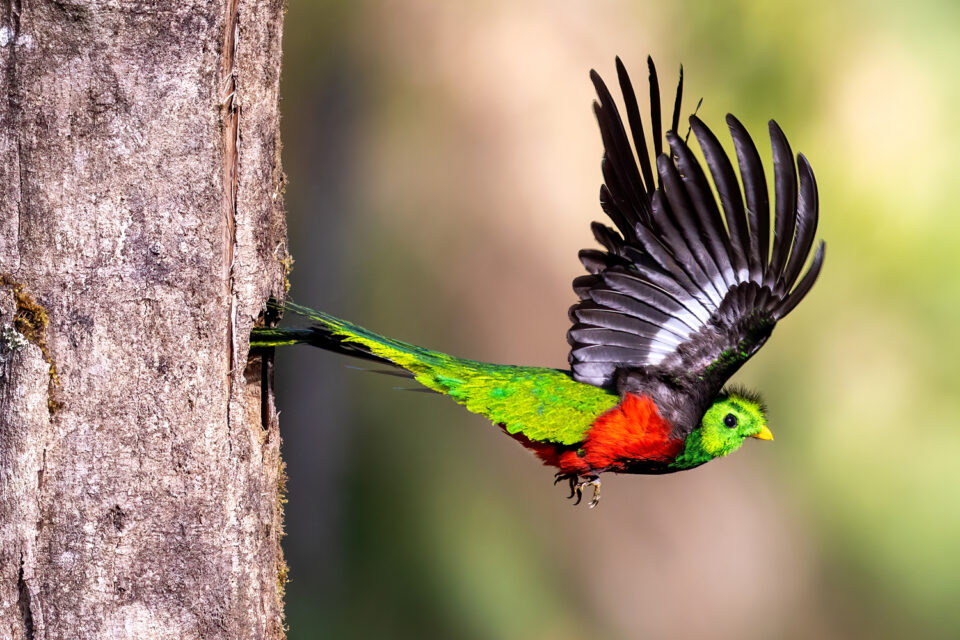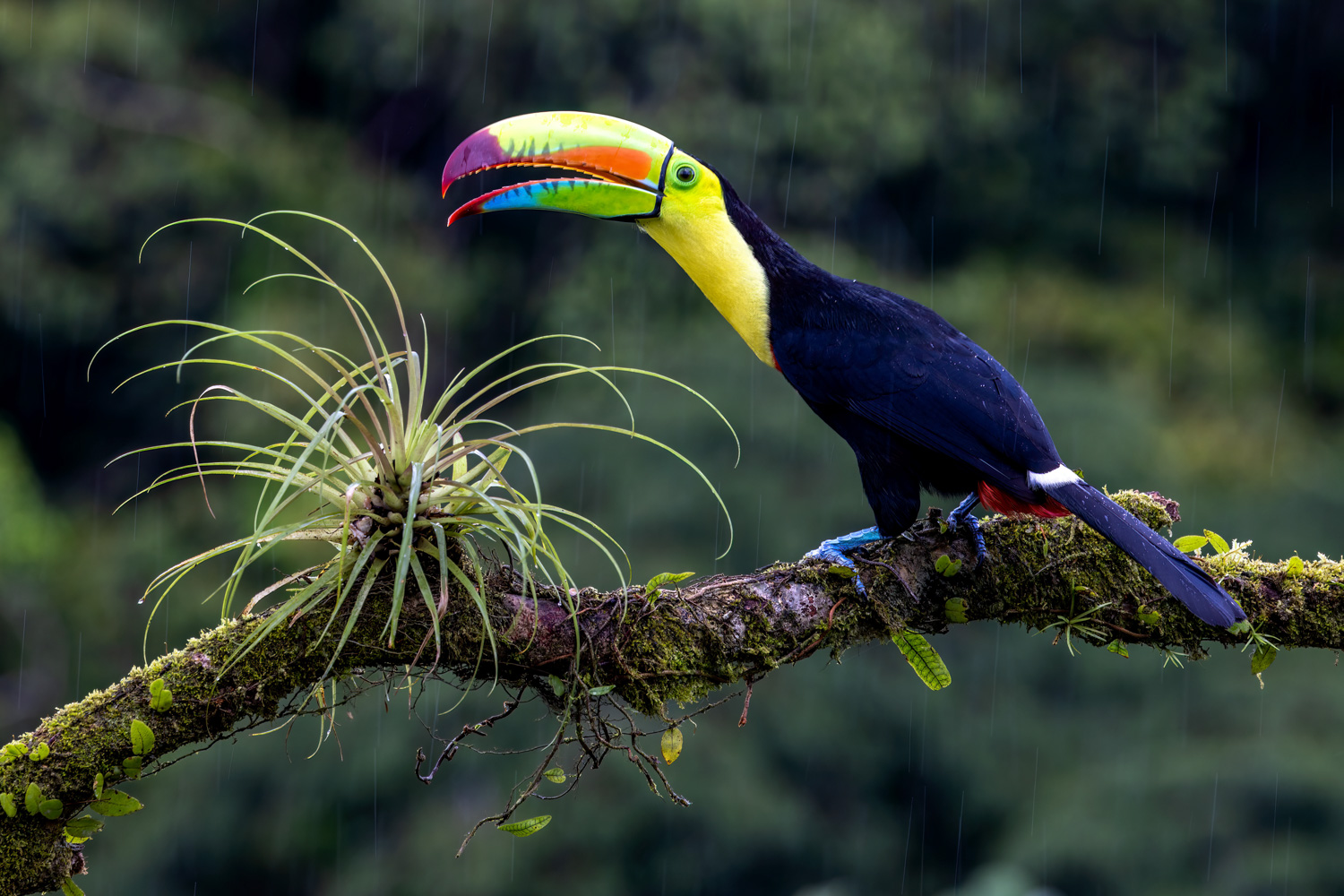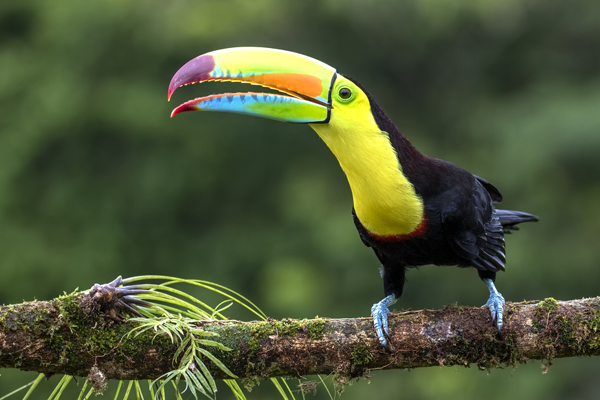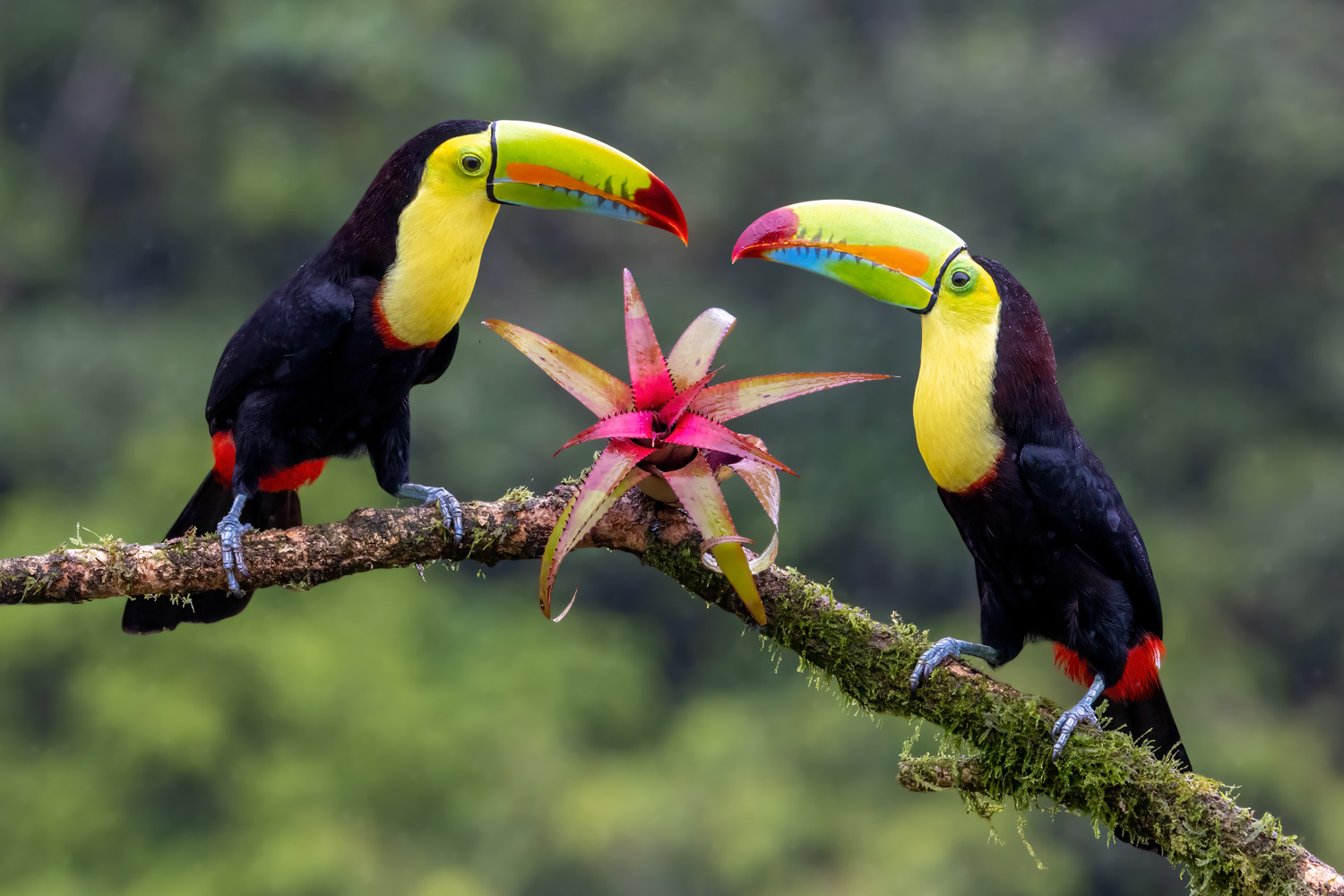Having just returned from Costa Rica and now going through my thousands of images, I’m always surprised when I come across something I had completely forgotten we photographed. It’s like reaching into the pocket of a pair of jeans you haven’t worn in a while and finding a $20 bill! Our Costa Rica tours are always so full of shooting such a huge variety of subjects, that it is easy to overlook a few that were shot in the early days of the trip. Even though the title of this tour may be Costa Rica Birds, we always photograph so much more, such as colorful poison dart frogs, red-eyed tree frogs, venomous snakes, unique giant insects and even bats in flight at night.
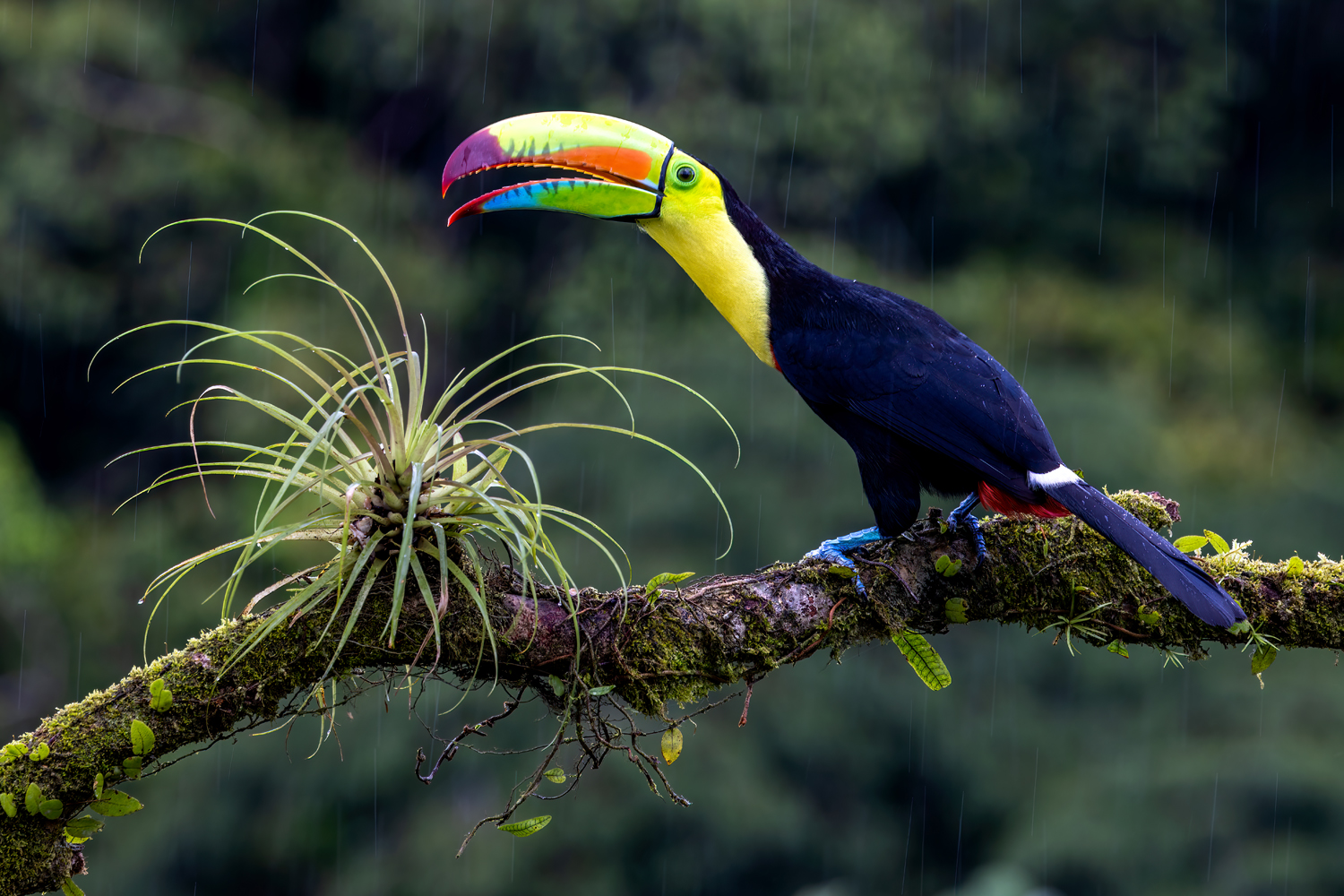
There is such a wide range of subjects in this tiny country because the topographical diversity from the lowlands to the cloud forests at over 10,000 feet lends itself to a huge number of species filling their own unique niches. It’s also interesting to see how some species are only found within a very narrow range of altitudes while others freely travel from the lowlands to the mountains. Even though I have been here many times over the past decade, I’m often surprised by photographing a new species that I’ve never seen here before. Costa Rica is truly one of my favorite places to visit and photograph wildlife.
The trip began in Alajuela, near San Jose, where we met for our initial dinner and informal ‘classroom’ about what to expect and what new camera techniques we will be using for select subjects. I make sure that everyone is comfortable with shooting in manual exposure mode. Some of our shooting occurs in situations where the camera’s automatic metering system can be easily fooled. While other shooting situations such as the bats at night absolutely require us to set our exposures manually. I pass out laminated “cheat-sheets” to everyone to use for the duration that have all the camera settings and instructions needed for these very specialized shoots. Everyone quickly realizes that it is far simpler than they thought.
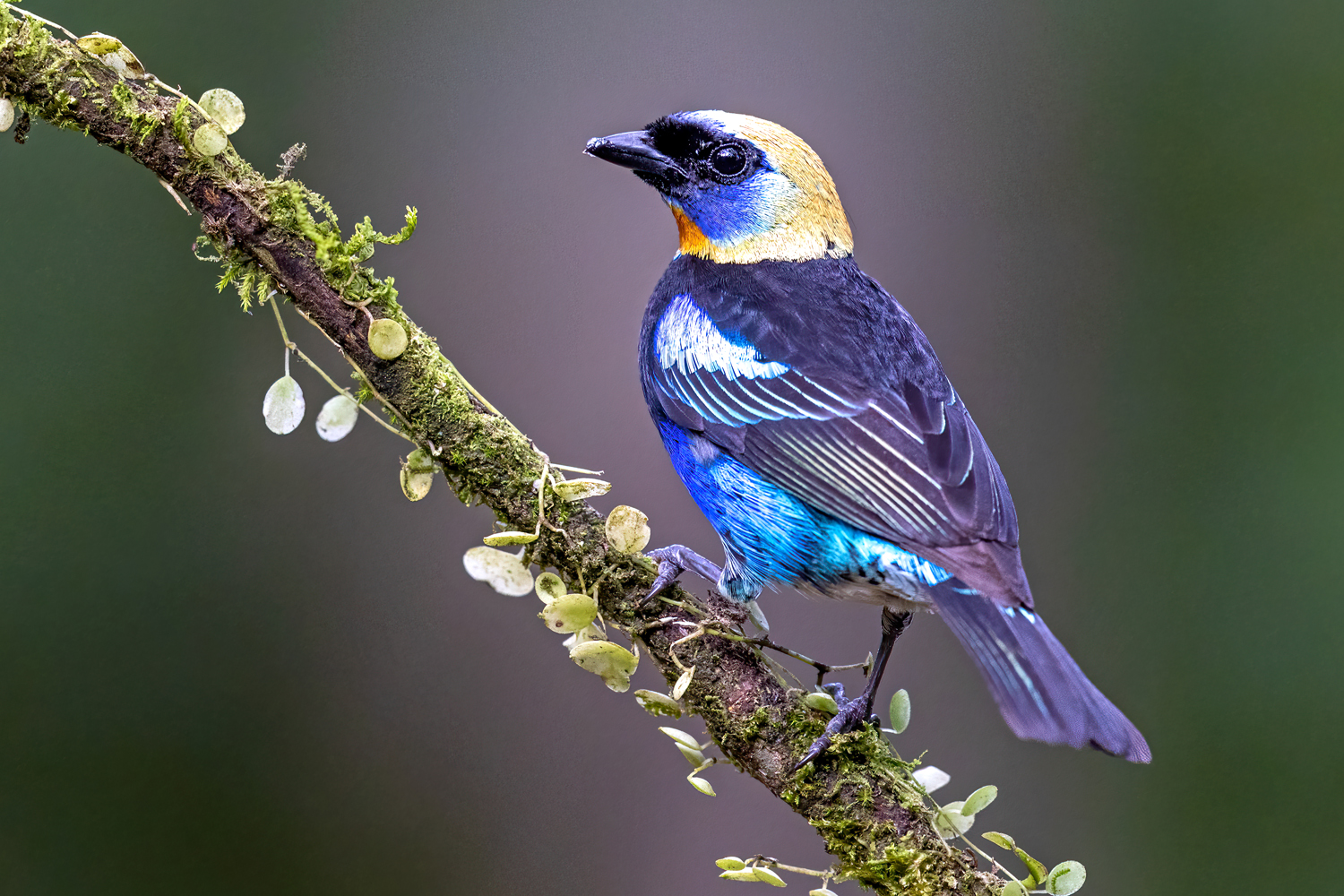
Our first five days were spent in the Caribbean lowlands split between two completely unique lodges and properties. While it is warm and humid in the lowlands, when the breeze blows, it is quite comfortable. We are immediately bombarded by a rainbow of colorful birds coming to within easy camera range. The air rings with the sounds of great green macaws, red-lored parrots, brown-hooded parrots and the vocal keel-billed toucans and yellow-throated toucans. Three species of vibrantly colored honeycreepers as well as at least a half-dozen varieties of colorful tanagers also frequent our fruit stations. We photograph these birds on natural, bromeliad and moss-covered branches as they wait their turns to feed on bananas (that we supply) and the figs and berries that the trees are naturally laden with at this time of year.
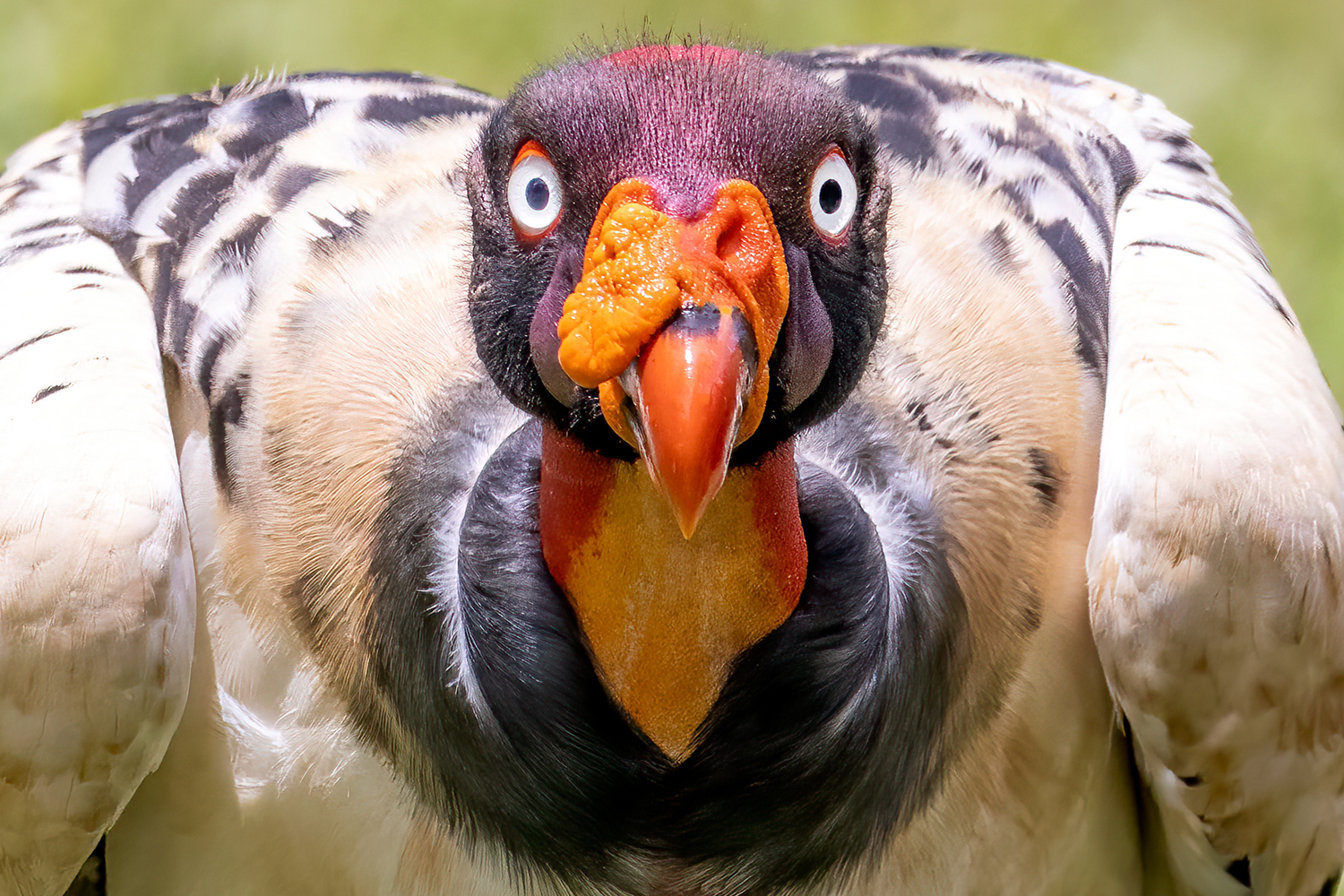
Toucans, parrots, and songbirds aren’t our only quarry here. The next morning finds us in specially constructed photo blinds (hides) where we can capture the most magnificent vulture in the Americas, the king vulture. Adult king vultures are predominantly white with black along the edges of their wings. Their faces and necks are gray and orange with orange dangling growths called ‘caruncles’ on their faces. The youngest king vultures are uniformly black. And various intermediate youngsters sporting some white and some black visited frequently. All made for exciting photography of flight, perching and interacting.
Later in the day we have arranged a special shoot to capture images of some creatures that are difficult to find. Amongst these are several venomous snakes such as eyelash vipers, hognose vipers and the very venomous fer-de-lance. Our snake handlers are very experienced, and we photograph these jungle denizens completely safely from very close distances.
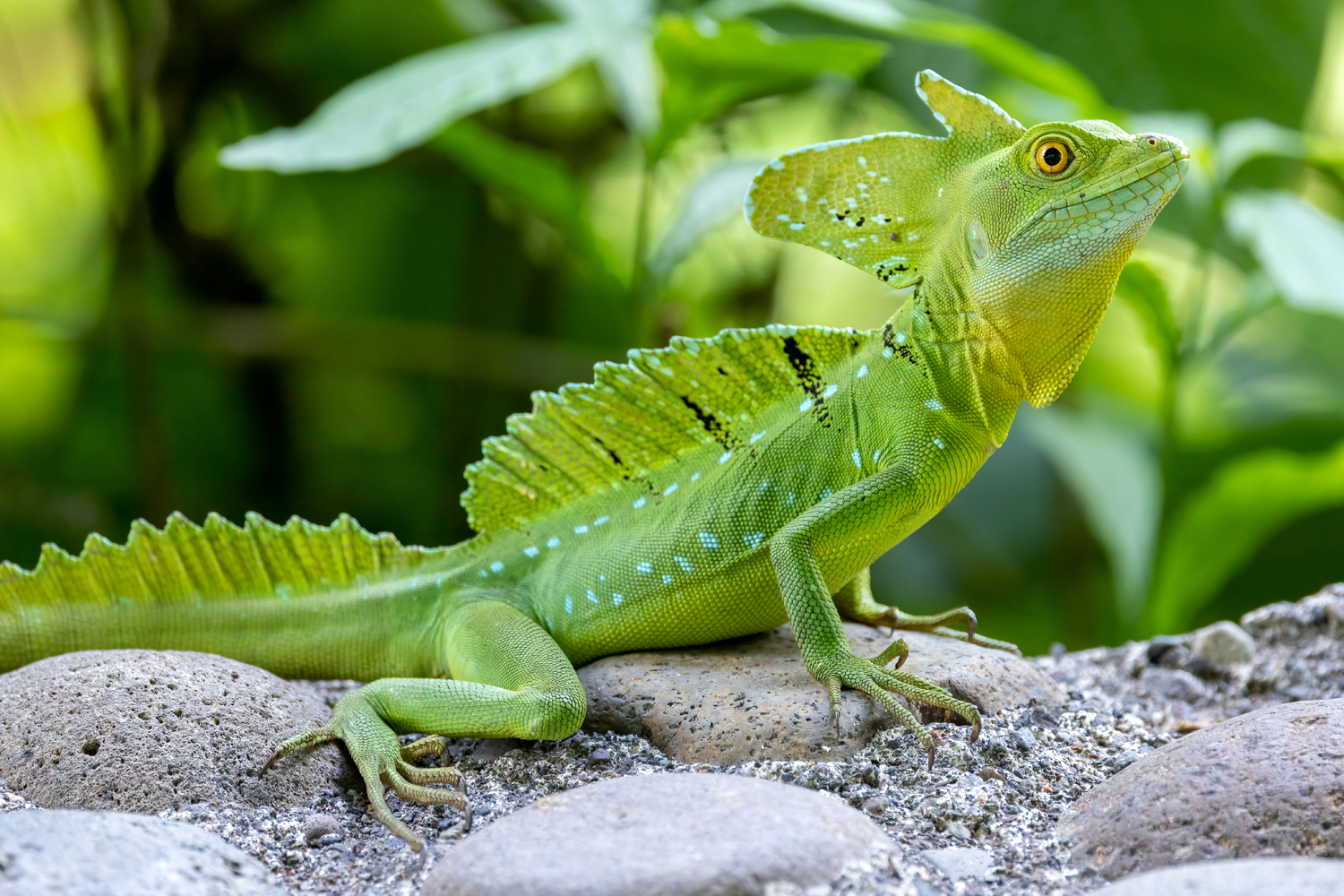
Moving to our next lowland lodge gives us completely new photo opportunities. On this property, especially after a timely heavy rain, we can photograph the emerald basilisk lizard with its three impressive crests, and both the blue jean poison dart frog and the green and black poison dart frogs as they go about their day. After dinner, we photographed wild, almost cartoonish, red-eyed tree frogs. Heavy rain for about an hour in mid-afternoon was exactly what we needed to excite the frogs. The red-eyed tree frogs started chirping well before the sun went down. They were more vocal and more numerous than ever, and everyone got wonderful shots of this rain forest icon. When not photographing on the lodge property itself, we ventured out to photograph scarlet and great green macaws, capuchin monkeys, and on this trip, we were very fortunate to photograph a three-toed sloth!
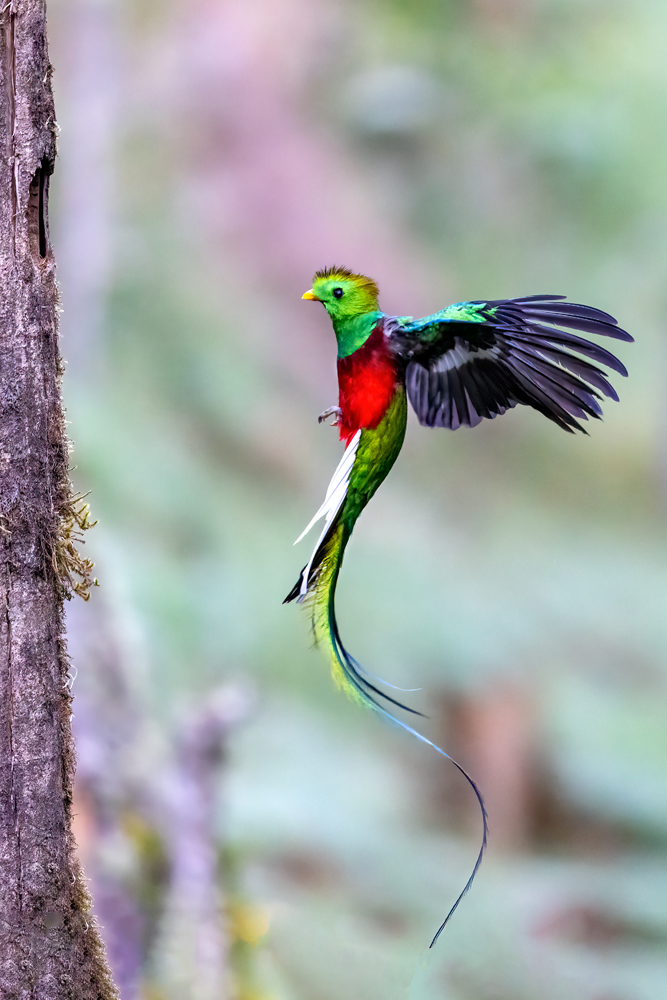
Time to leave the rain forests of the lowlands and head to the cloud forests of the highlands. The heat and humidity quickly give way to much drier and cooler conditions. While in the highlands we photographed several new species of hummingbird using natural light. We see a few new tanagers such as the flame-colored tanager and silver-cheeked tanager and a brand-new species for me in Costa Rica, both male and female rose-breasted grossbeak. Acorn woodpeckers also made their presence known, making it the fourth woodpecker species we’ve photographed. But our main reason for climbing to an altitude of 9000 feet is, of course, to photograph the magnificent resplendent quetzal.
The resplendent quetzal is always a prize for any wildlife photographer. The male quetzal is brilliant green on most of its body with a bright red breast. But what really sets it apart are the long trailing covert feathers that can be over three feet long. These two feathers trail behind the bird while in flight, giving the impression of a long flowing tail. But technically, these feathers are not tail feathers. Our local quetzal guides are incredible when it comes to finding the birds. At this time of year, we usually photograph them nesting. And this year was no exception. It was early in the nesting season, so the parents were taking turns sitting on eggs. They would only change jobs about once every 2-3 hours. So, it was a lesson in patience. But it really paid off as we captured several nice flight shots of both the male and the less ornate female quetzal as they flew in to or out from the nest.
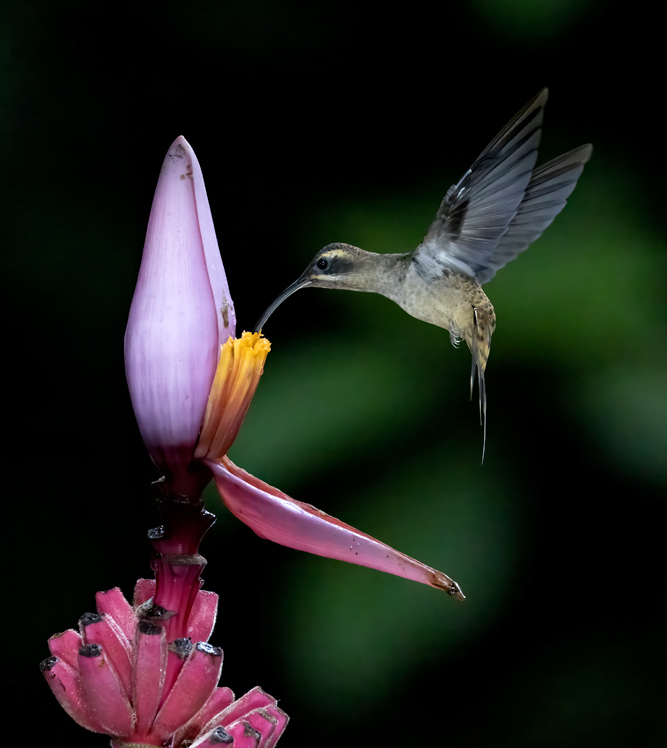
So far, we have photographed every target species plus many more. But we are not done yet. We leave the highlands and head lower to the foothills at about 3000 feet. As we’ve come to find, this elevation offers us several new bird species that we didn’t see elsewhere such as the brown jay, Lesson’s motmot and a variety of hummingbirds such as the green-breasted mango and long-tailed hermit. It is here where we set up our high-speed multi-flash setups to photograph hummingbirds, freezing their wings in mid-beat. Our goal is to capture them as they fly to our flowers to feed and while they squabble for position.
But that is for tomorrow. Tonight, we have something else exciting in store. In midafternoon, I bring everyone together with their gear. I make sure everyone has their cameras set exactly as needed so there is absolutely no chance of anyone missing any shots. I answer everybody’s questions and share with them exactly what is going to happen. Of course, I’m talking about bat photography. Even through drizzling rain, Wilson, our local guide and driver, and I take all the necessary gear up into the forest for the night’s activity. I set everything up including the flashes and triggers and flowers. I then raced back down to the lodge just in time to return for dinner. The light rains continue as I quickly eat and head back up into the forest to test everything. The bat activity is very light this first evening. It’s probably due to the rain. But a few bats do fly through, and I call Wilson to bring everybody up. Once everyone arrives, we quickly get set up. Only a few bats come through over the next hour and none of the shots are any good.
The next morning, while I was setting up the flash gear for our hummingbird photography, we were very fortunate to be visited by a tayra as it scavenged for food near our fruit feeders. A tayra is a large omnivore in the weasel family and always a surprise when it comes out in the open and can be photographed. After breakfast, we begin the rotation through the hummingbird setups. At first, it is slow. But by the afternoon, everyone has at least a few very good hummingbird shots at the setups.
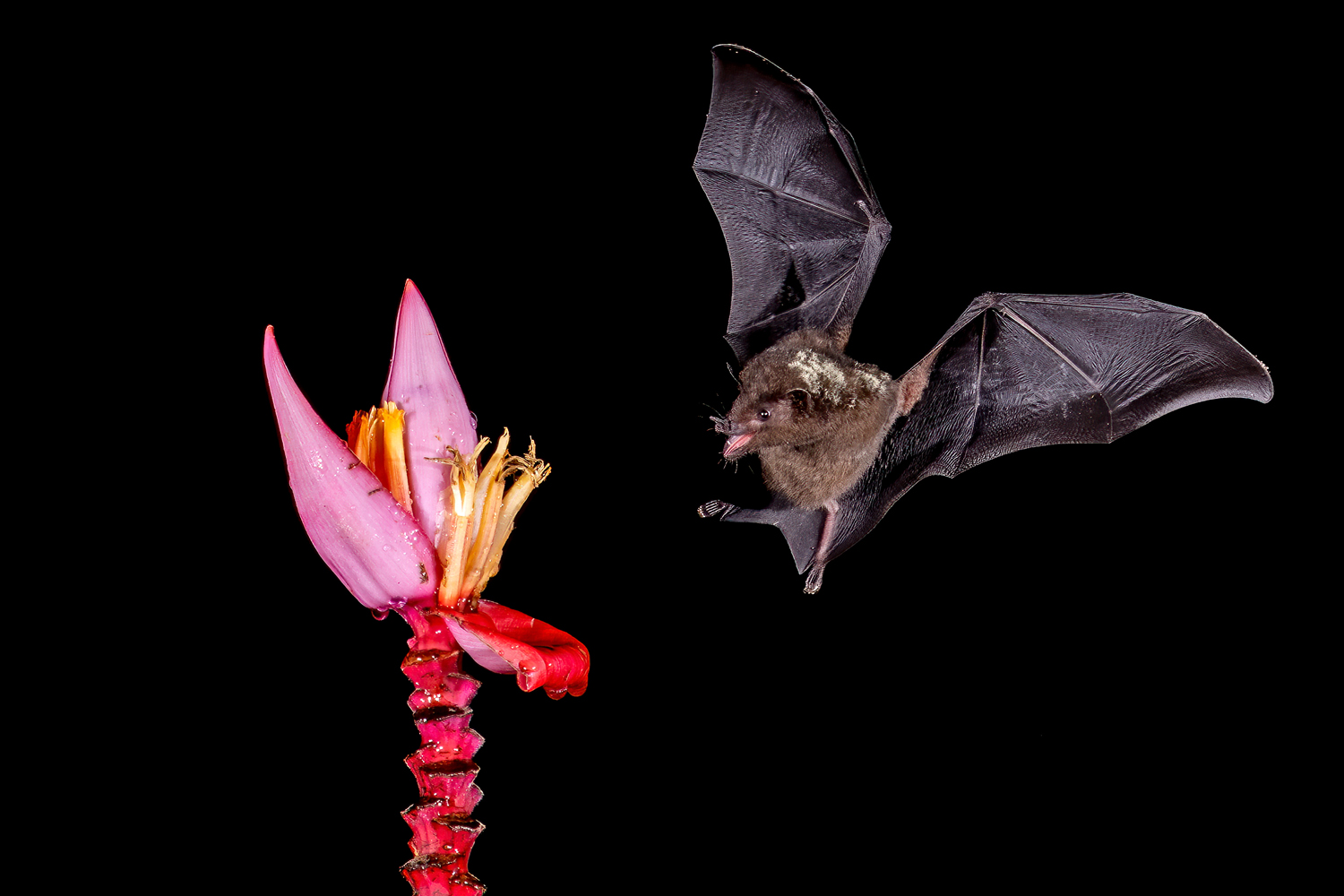
We ended our hummingbird shoot a bit early because everyone was excited for another chance at bats. The rain stayed away today so I am very hopeful that we’ll have a better night. By now, everyone is a bat photography expert. I set up the gear before dinner and raced up immediately after to test the system. I’m already hearing and seeing bats coming to our flower. Once I get a couple of bats in the camera, I double check the settings and call Wilson to bring everyone up as soon as possible. We set up quickly and the action starts immediately. We are getting bats coming through several times per minute. We captured some of the best bat pictures ever. Nobody was happier than I was after the prior night.
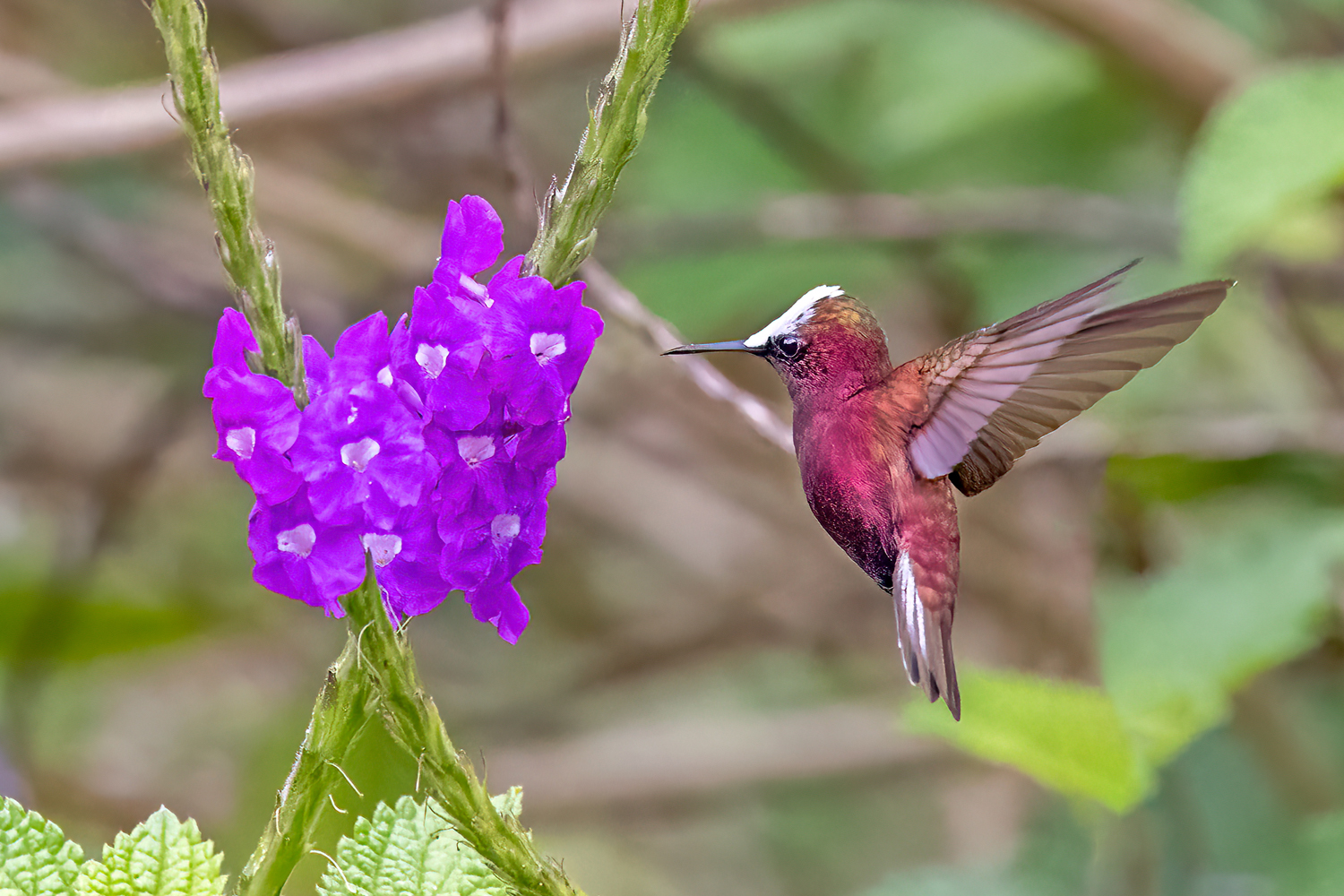
While I packed gear on the final morning, the group had the opportunity to photograph a very rare hummingbird called a snowcap. It is only found between 300 and 800 meters (about 2600 feet). Since we were at 3000 feet, they traveled downhill until they found an area where the snowcaps were known to feed. After about an hour, everyone had a good chance at photographing this tiny hummingbird. When I heard of their success, I quickly finished packing and Wilson took me down to the spot. In all the years I have been coming to Costa Rica, this is the first time I’d ever had a chance at photographing the snowcap. It was not easy. The snowcap is a very small, very fast hummingbird. But after about an hour, success! Another first for me.
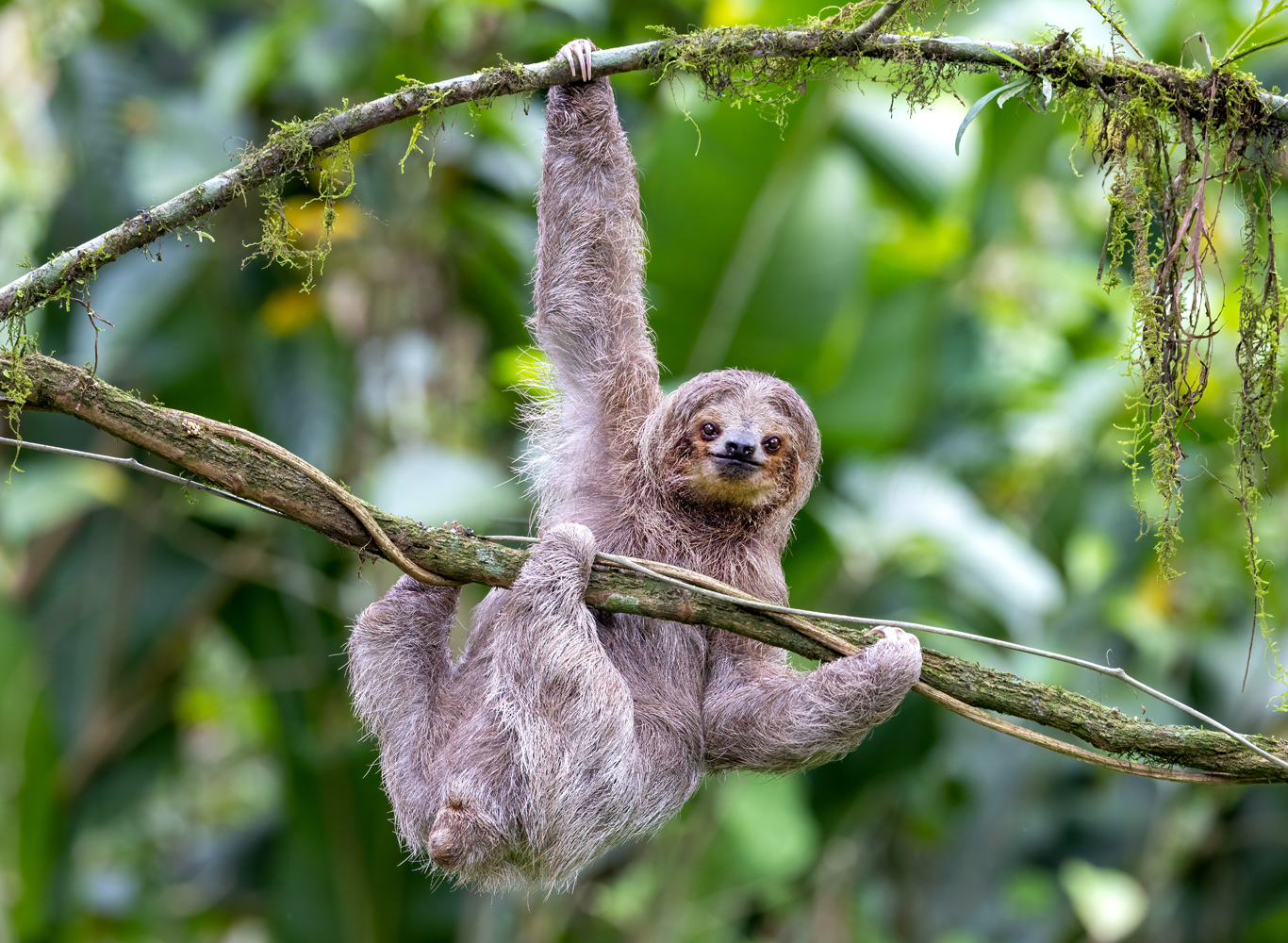
Our Costa Rica tours are always high-volume, multi-subject photo experiences. Everyone came away with spectacular images of all our targeted species plus many others. No matter how often I visit, I am always excited to get back there. Besides the great photo opportunities, it is a great opportunity to learn a few new techniques. And it’s just downright FUN!
